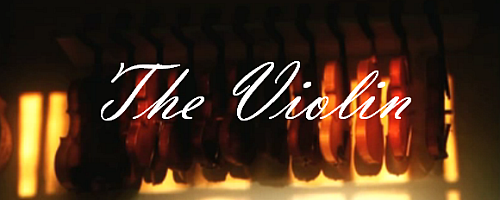The Violin
The Violin
The most well known of all the chordophones (or more commonly known as stringed and fretted instruments) is the violin. Some say the violin is the closest sounding musical instrument to the human voice. It is difficult to argue that point. Also, the violin is profoundly expressive in nature and it is considered to be one of the most versatile instruments in the orchestra. The range of articulations available to the violin is unsurpassed however only the other stringed instruments such as the viola, cello and classical guitar. A well played violin has the ability to tame the wildest of beasts, calm the inner spirit and excite us into action.
Three of the most famous luthiers of the violin include Andrea Amati (1520-1611), Guiseppe Guarneri (1579-1630) and of course Antonio Stradivarius (1644-1737), all of which are widely recognized as having produced absolutely amazing violins of enduring value, profound sonic beauty and of the highest quality ever made. Luthiers throughout the world make serious attempts at matching the quality and character of these instruments however they remain the most sought after violins of all stringed instruments.
The violin is primarily played using a bow and it is often plucked by either the right or left hand fingers thus offering a wide range of tone-color and character. The bow for the violin was perfected* by a Frenchman, Francois Tourte (1747-1835) nearly a hundred years after the development of the violin by Antonio Stradivarius. The bow for the violin is the lightest weight among those used for the viola and the main orchestral foundation instruments, the cello and the basses. The bow for the viola may be slightly shorter however it is heavier in its construction.
Pablo de Sarasate a Spanish composer and virtuoso violinist wrote an amazing piece for the violin titled Zigeunerweisen Op. 20 also known as Gypsy Airs. This is a very difficult piece to play however among virtuoso violinists it is popular and frequently recorded. What is amazing about this composition is that it demonstrates many of the violin’s capabilities, articulations and this musical work utilizes and extends throughout much of the range of the violin.
In the following video, Gabriel Arcángel, also Spanish and a violin virtuoso, gives us an absolutely amazing performance of Zigeunerweisen. As the liner notes suggest, I support the idea of listening to this performance using a pair of good quality headphones or in the least high quality speakers to enable hearing the nuances of his performance.
We wish to extend our thank Gabriel Arcángel for his wonderful performance and to YouTube for making this video available for non-commercial and educational use as described in their embed policy.
The Violin
Citations
*Source – An Introduction to Music, Second Edition (1951) – Page 6 – Prentice Hall
Photo Credits – Violin Photo – The photo used as the article header is a still picture taken from the Story of a Luthier video by Alberto Bona and it is used under written permission. This is a non-commercial and educational use of the still photograph from that film and used in this article about the violin.




